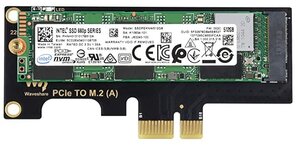Hi everyone,
I have a recently restored LC II to play around with. I've been poking around the schematics and have learned that the PDS slot is basically a giant breadboard that gives you access to all the processor pins. This got me thinking about what kind of interesting hacks could be done using that slot and modern electronics.
The most interesting hack I've found so far was this one, which captures video directly from the PDS of a Macintosh SE using a microcontroller:

 hackaday.com
hackaday.com
It got me thinking about how neat it would be to have a low-cost Arduino-like PDS card that could be used to implement interesting, and maybe useful projects for vintage Macs, without requiring a mess of jumper wires.
I got to thinking about this and started listing out some requirements and/or gotchas.
1) The microcontroller needs at least 39 GPIO pins for Macs with a 16-bit bus: 23 for the address, and 16 for the data
2) The microcontroller needs to be 5V tolerant, for *read-only* observation of the bus
3) Tri-state level shifters would be needed for *read-write* access to the bus.
4) The microcontroller clock speed needs to exceed the bus speed of the Mac by a significant margin
5) Different Macs have different PDS slots, so making a universal card may or may not be possible
It seems that requirement 3 would drive up the cost of the card quite a bit, but I still think interesting things can be done with read-only access. Examples:
1) A VGA card for compact Macs; possibly making using of "classic" Quickdraw in eight color mode.
2) Screen casting via Wifi, maybe using an ESP32 as a bridge?
2) Driving LED matrices and other external things
3) Sending messages to IoT devices for home automation
Another cost-related question is the PDS connector. I understand these are technically Eurocard style connectors, but it appears as if standard pin headers can fit the PDS slot. Is there any danger of damaging the connector by using these instead of the correct Eurocard style connector?
For people who have more experience designing cards and getting them manufactured, what do you think would be the cost of such a card, if a service such as JLCPCB was used for assembly?
Anyhow, I am more of a software guy, and less so a hardware guy, which is why I am asking these questions here just to brainstorm some ideas.
I have a recently restored LC II to play around with. I've been poking around the schematics and have learned that the PDS slot is basically a giant breadboard that gives you access to all the processor pins. This got me thinking about what kind of interesting hacks could be done using that slot and modern electronics.
The most interesting hack I've found so far was this one, which captures video directly from the PDS of a Macintosh SE using a microcontroller:

srm32f4discovery – Hackaday
It got me thinking about how neat it would be to have a low-cost Arduino-like PDS card that could be used to implement interesting, and maybe useful projects for vintage Macs, without requiring a mess of jumper wires.
I got to thinking about this and started listing out some requirements and/or gotchas.
1) The microcontroller needs at least 39 GPIO pins for Macs with a 16-bit bus: 23 for the address, and 16 for the data
2) The microcontroller needs to be 5V tolerant, for *read-only* observation of the bus
3) Tri-state level shifters would be needed for *read-write* access to the bus.
4) The microcontroller clock speed needs to exceed the bus speed of the Mac by a significant margin
5) Different Macs have different PDS slots, so making a universal card may or may not be possible
It seems that requirement 3 would drive up the cost of the card quite a bit, but I still think interesting things can be done with read-only access. Examples:
1) A VGA card for compact Macs; possibly making using of "classic" Quickdraw in eight color mode.
2) Screen casting via Wifi, maybe using an ESP32 as a bridge?
2) Driving LED matrices and other external things
3) Sending messages to IoT devices for home automation
Another cost-related question is the PDS connector. I understand these are technically Eurocard style connectors, but it appears as if standard pin headers can fit the PDS slot. Is there any danger of damaging the connector by using these instead of the correct Eurocard style connector?
For people who have more experience designing cards and getting them manufactured, what do you think would be the cost of such a card, if a service such as JLCPCB was used for assembly?
Anyhow, I am more of a software guy, and less so a hardware guy, which is why I am asking these questions here just to brainstorm some ideas.

